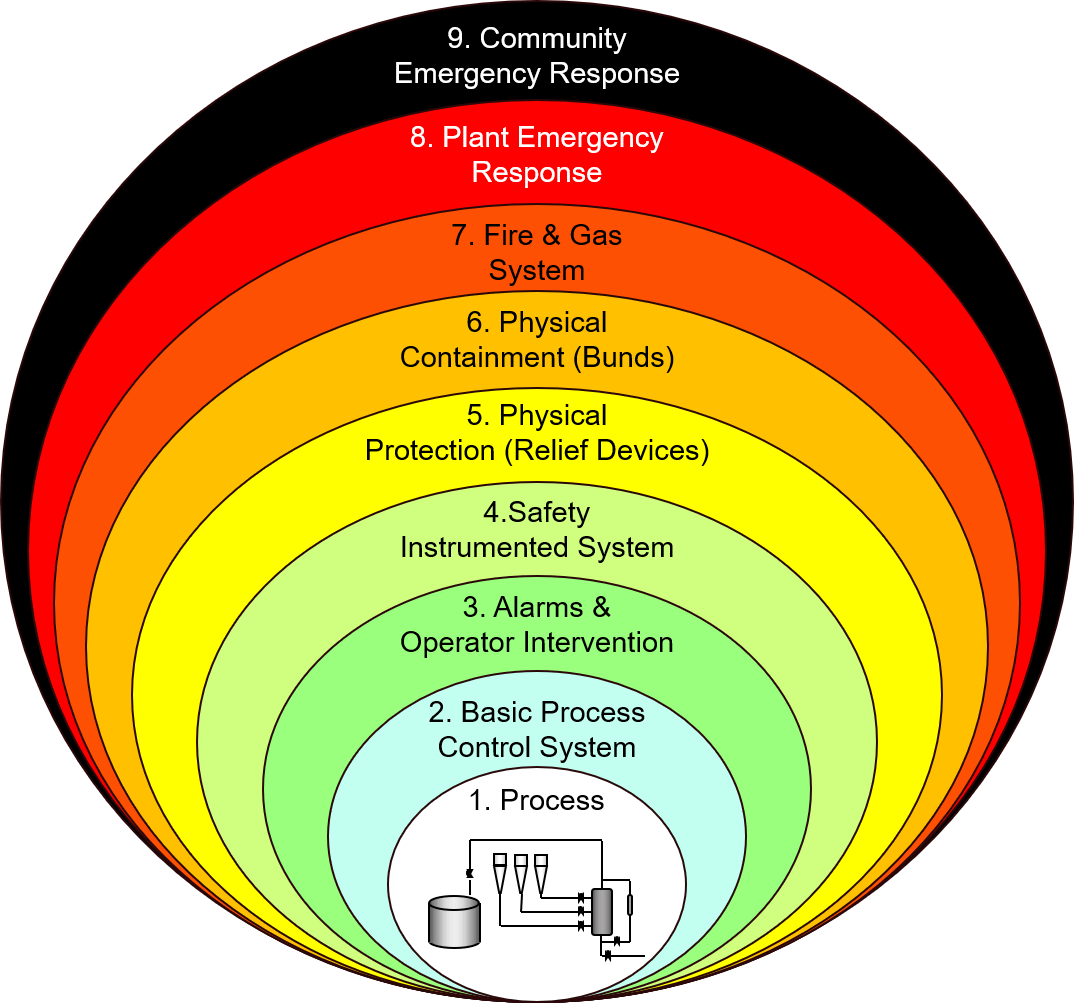LOPA/SIL
Layers of protection analysis (LOPA) & SIL study is a powerful analytical tool for assessing the adequacy of protection layers used to mitigate process risk. LOPA builds upon well-known process hazards analysis techniques, applying semi-quantitative measures to the evaluation of the frequency of potential incidents and the probability of failure of the protection layers.
Technical equipment can pose a safety risk so dangerous that people should not be exposed to the equipment. In such cases, the relevant risks must be reduced to meet the need for safe operation. It must be possible to quantify (and measure) risk reduction in order to satisfy this requirement. This is achieved using the SIL "unit", whereby only whole values are defined within a range from 1 to 4.
When risk reduction is complete, it must be proven that the extent of the risk reduction corresponds to the minimum required parameters (i.e. the SIL requirement).

Safety Integrity Level, or "SIL" for short, is a unit of measurement for quantifying risk reduction. The requirements for a given SIL are not consistent among all of the functional safety standards. In the functional safety standards based on the IEC 61508 standard, four SILs are defined, with SIL 4 the most dependable and SIL 1 the least. A SIL is determined based on a number of quantitative factors in combination with qualitative factors such as development process and safety life cycle management.
Steps to be followed-
Through this, our client can focus on
Contact us for inquiry on LOPA/SIL Services.
